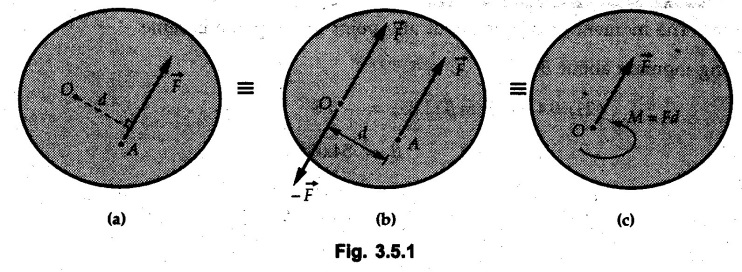Engineering Mechanics: Unit II: Equilibrium of Rigid Bodies
Force-couple System
Force acting on an object produces translation and rotation of the object.
Force-couple System • Force acting on an object produces translation and rotation of the object. • The translational effects are represented by the magnitude and direction of the force whereas the rotational effects are represented by the moment of force. • Hence a force can be replaced by a force and couple as shown in Fig. 3.5.1. • Consider a force F acting at point A as shown in Fig. 3.5.1 (a). • Add two forces of magnitudes • The force • Thus the force • This procedure can be extended to a system of non-concurrent forces which can be reduced to single resultant force and a couple. • Conversely, a force-couple system can be combined to a single force acting at a distance 'd' from a given point O. at point O as shown in Fig. 3.5.1 (b) which are parallel to the force
at point O as shown in Fig. 3.5.1 (b) which are parallel to the force ![]() at A.
at A.![]() at A and the force -
at A and the force -![]() at O form a couple with moment F.d about any point in the plane.
at O form a couple with moment F.d about any point in the plane.![]() at A is replaced by a force
at A is replaced by a force ![]() at O and a couple of moment F•d as shown in Fig. 3.5.1 (c).
at O and a couple of moment F•d as shown in Fig. 3.5.1 (c).
Engineering Mechanics: Unit II: Equilibrium of Rigid Bodies : Tag: : - Force-couple System
Related Topics
Related Subjects
Engineering Mechanics
ME3351 3rd semester civil, Mechanical Dept | 2021 Regulation | 3rd Semester Mechanical Dept 2021 Regulation
